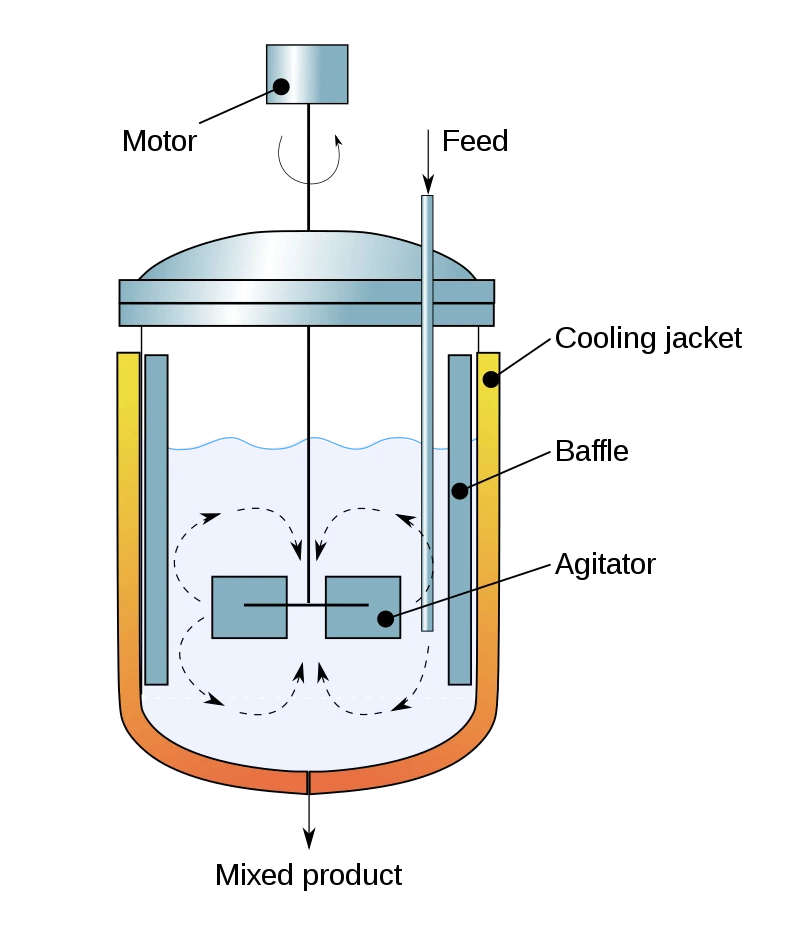Instantaneous mixing in microfluidic reactor: CReaNet
Microfluidics, because of the small scale, offers an exact way to control chemical reactions, particularly the mixing of reagents.
The MSCA-ITN CReaNet project aims to reproduce a microfluidic mixer to achieve instantaneous mixing and study chemical reaction networks on a chip.
This project is completed now. If interested, feel free to contact us.
Instantaneous mixing in microfluidic reactor: introduction

Chemical reaction networks serve various complex biological functions such as signaling, protein synthesis, and homeostasis.
These reactions operate far from equilibrium conditions, giving rise to behaviors such as oscillations and pattern formation.
To reproduce them, it is thus essential to design reactors allowing an instantaneous mixing of the reagents. Typically, this is made in a continuously-stirred-tank-reactor (CSTR).
Instantaneous mixing in a µCSTR: project description
A continuous stirred tank reactor is an open reactor fed through two or more inlets with reagents at a flow rate Q. The reagents are supposed to be perfectly mixed in the reactor of volume V, such that each infinitesimal injection of fresh reagents is instantaneously homogenized in the whole reactor. The outlet discards reagents at flow rate Q, thus keeping V constant.
Microfluidics is a technology of choice to provide precise spatiotemporal control of the concentrations of reagents with, typically, ranges of 1µm and 1s and to study chemical reaction networks more precisely.
In this project, we aim first to design a CSTR on chip for the instantaneous mixing of chemical reagents at a microscale and evaluate its mixing capacity. We aim to use this microreactor to propose a microfluidic universal mixer useful for other microfluidics applications.

In the second step, we will integrate up to 6 µCSTRs on a single chip and study the stability of the whole system. Very accurate flow control to feed this mixers’ network will be achieved using the Elveflow OB1 pressure controller. It allows precise and stable flow and pressure control, enabling us to study the optimal reagent concentrations, flow rates, and spatial distribution of the µCSTRs.
The final aim is to implement biocompatible chemical reaction networks in our device. Biocompatible chemical reaction networks have up-and-coming applications, such as signal amplification or biomaterial synthesis. We will, in particular, reproduce a pH oscillator on our on-chip mixer.
This project has received funding from the European Union’s Horizon research and innovation program under the Marie Sklodowska-Curie grant agreement No 812868 (CReaNet project).
Researcher

Nisarga Reddy
PhD Candidate
- Research Engineer FEA (Silgan Dispensing Systems)
- FEA Engineer (SKF)
- Master of Technology in Mechanics & Machine Design ( Visveswaraya Technological University, India)
Areas of expertise:
continuum mechanics, Product design & optimisation, Finite Element Method


